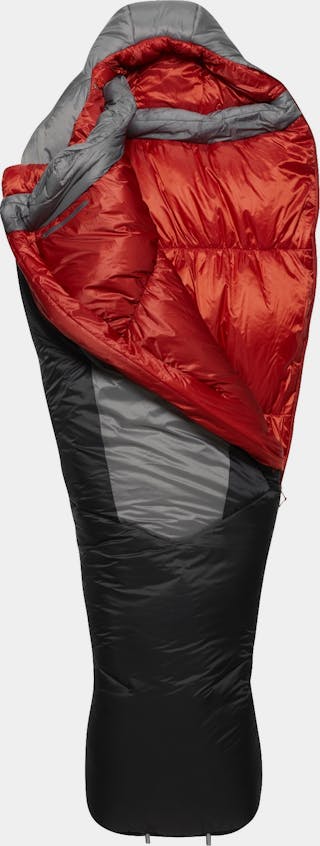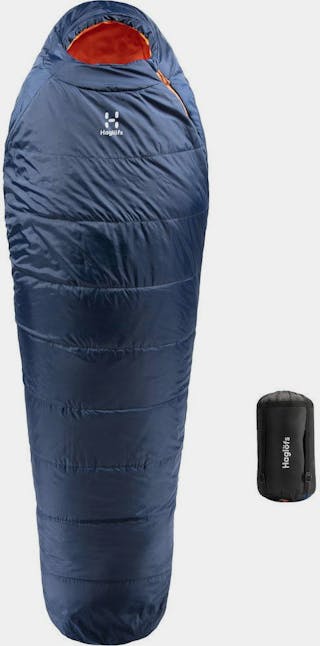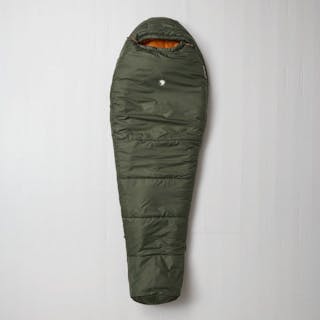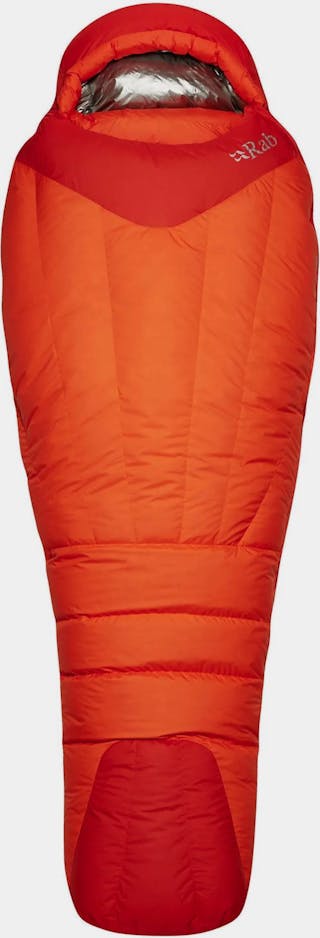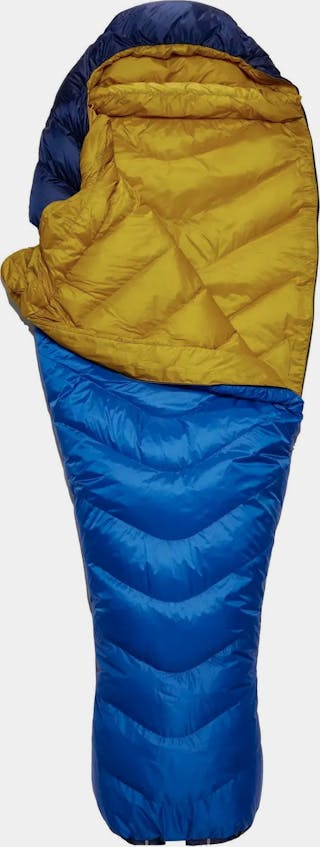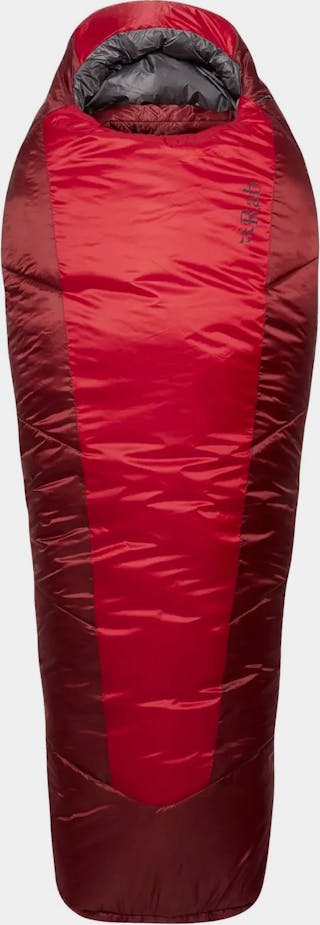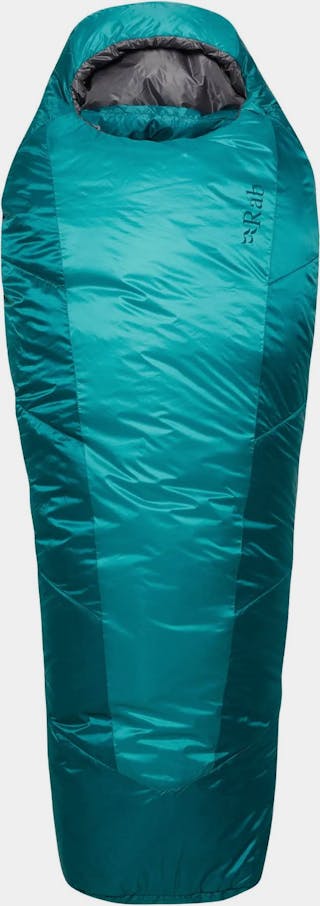The sleeping bag - one of the cornerstones of comfort and safety
Scandinavian Outdoor offers a wide selection of sleeping bags: there’s a sleeping bag for every season and purpose. Our warmest winter bags are perfect for winter trekking in the fells, while our lightest summer bags are best suited for warm-weather camping and travel.
The Secret of Warmth
You are the heat source, the sleeping bag is the insulation layer – by maintaining your energy intake and fluid balance, you ensure staying warm. The main task of a sleeping bag is to trap your body heat and create a small microclimate around you.
Down or synthetic fiber?
Sleeping bags use either down or synthetic fibers as insulation. Down is still unbeatable when it comes to the warmth-to-weight and packability ratio. Synthetic insulation, on the other hand, is nearly unaffected by moisture and is also more affordable. Down products always list a Fill Power value. This is often confused with how warm the bag is, but they are different things: a high Fill Power means that even a small amount of that quality down can fill a large volume. The higher the value, the loftier the down. High Fill Power down enables sleeping bags that are very lightweight relative to their warmth, whether for summer or winter use. The warmth of a bag is a sum of the amount and quality of the fill.
Three temperature ratings – why?
Sleeping bag temperature ratings can seem confusing. However, they allow bags to be compared on equal terms, as the temperature values of the bags we sell are measured in laboratories according to the EN 13537 standard. There are two comfort temperatures, measured for the “average” man and woman. Sometimes these are referred to as comfort and limit temperatures. You should choose your sleeping bag according to these comfort ratings, as they are defined by the ability to sleep uninterrupted for 8 hours. The extreme temperature is the lowest temperature at which the bag protects from hypothermia for six hours, though frostbite may still occur. While the extreme rating is far from normal use scenarios, it is often the only temperature listed when not all values are presented.
If you know you tend to sweat or feel cold easily, interpret these ratings with that in mind: if you’re sensitive to cold, it’s a good idea to choose a bag several degrees warmer than the standard recommends. The right kind of clothing also helps: use merino wool against your skin and add a midlayer as needed. And on a trip, make sure to eat a bit more in the evening – running out of energy during the night practically guarantees feeling cold.
Seasons
Winter sleeping bags are sometimes called four-season bags, but the truth is they are far too hot for summer use. If you only want to own one sleeping bag and don’t do winter trips, a three-season bag is the right choice. It will serve you from spring to fall. Summer sleeping bags made for warm trips are delightfully lightweight and compact.
Bag and mat – inseparable companions
Remember that even the best sleeping bag needs a sleeping mat underneath. Your body weight compresses the insulation under you flat, so you need a separate insulating pad. Our selection ranges from ultra-minimalist foam mats to thick, insulated air mats. The colder the weather, the thicker the mat you’ll need.
On the go and at home
When on a trip, air out your sleeping bag whenever possible after each night. Ideally, hang it from a tree on a sunny morning and most of the moisture accumulated during the night will evaporate. This way, the insulation remains effective throughout the trip. If you have several damp days in a row and can’t air the bag, it will gradually start to feel colder. Today, more and more manufacturers treat the down in their bags to be water-repellent, greatly improving down’s traditional weakness – poor moisture resistance. Still, synthetic insulation remains the most reliable choice if you mostly venture out in damp conditions.
At home, it’s best to store your sleeping bag either loosely rolled up or in the spacious storage sack if one is included. The tight stuff sack should be reserved for trips, as prolonged compression can flatten the insulation over time.
Choose a sleeping bag that suits your needs
- At what temperature does the bag need to keep you warm? Choose your sleeping bag based on its comfort temperature rating.
- Does the bag need to be super compact and lightweight? If you’re counting every gram or otherwise need a very packable and lightweight bag, choose an ultralight sleeping bag. For many, a more standard sleeping bag works perfectly well and is often roomier.
- Down or synthetic insulation? Down is more expensive, but when comparing sleeping bags with the same warmth, a down-filled bag is lighter and packs down smaller.
- Price range. When buying a sleeping bag, you can choose two out of these three features: warm, lightweight, inexpensive. A cheap and warm bag will inevitably be quite large and heavy—but staying warm is the top priority!
Scandinavian Outdoor and sleeping bags
We have chosen trusted brands for our selection – Rab sleeping bags are seen in hiking and demanding use, Marmot is a traditional and reliable brand, Outwell makes excellent sleeping bags for campsite use. Robens is a newer brand that combines quality with a more affordable price point. Fjällräven.
Order yours now – fast delivery from a Finnish specialty retailer!







